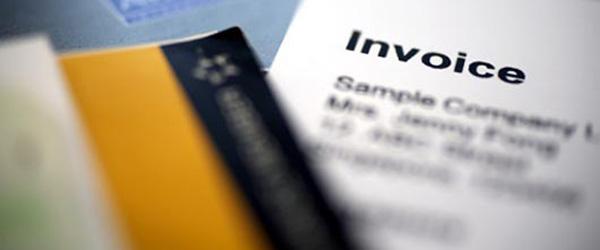Designers are one of the most interesting professionals of the world. They love their work and do it at their best; however, most of them freak out when the project comes down to the invoicing process. Basically, all creative professionals find it difficult to handle the money matters. However, money is what they work for, and money is what runs all the business. Therefore, it is crucial for designers to deal with this nightmare to run a thriving business.
The efficiency of the invoicing process is integral in maintaining a healthy cash flow of your business. Smart invoicing enables you to streamline the payments from multiple clients and enables you to get paid in time and according to your desire. No matter what your current invoice process is, you can take steps to help improve both timely payments and customer relations.
Automated Invoicing vs. Manual Invoicing
If you are a salaried designer, your invoicing and billing is taken care of by your employee, however, invoicing is a menace for freelance designers who constantly have to generate invoices for their projects. Since, sending quotations and invoices is an important part of your work; it is important for you to decide whether you want to go for automated invoicing or just do it manually.
According to the data management company Formscan as per their recent survey, 48% of UK’s businesses still use entirely manual invoice processing systems. This is very typical of orthodox organizations to have strange hesitation towards automated processes, however, these days a lot of software and online tools are available to make things easier for the people (like freelance designers) who handle multiple responsibilities at work. No matter you opt for a server-based invoicing or a computer-based online invoicing, finding the right one is your task and with some good research it is not really that hard.

First Thing First, a Background Check
To conduct a smooth invoicing process, you should be careful in the very first place. Before getting into a legal contract with a certain client, it is suggested that you conduct a background check of the client’s payment habits. You can do so by doing a little research about the client’s reputation in the market regarding payments.
Moreover, (though companies don’t usually share their financial information with outsiders) if possible, you can ask your client to provide you with information regarding their outstanding bills and payments. A background check will enable you to figure out how seriously this client is going to take your billings.

Map out Your Invoicing Terms
When you are dealing with different clients at the same time, chances are that you may easily get dodged when it comes down to the financial matters. Most of this dodging happens when certain confusion arises between the two parties. Therefore, in order to minimize any confusion what so ever, it is good to map out some invoicing terms and present them to the clients beforehand. Some of the most important things to highlight can be:
- Determine your advance fee
- Number of days you would need to complete the task
- What is going to be the fee which you will charge in case of late payments
- Whether you will deliver the completed project before or after the complete payment
- What will you charge in case of re-do
- What should be the mode of payment
Although there will be situations when you will have to bend a few laws, however, try to stick to these principals as much as possible.

Detail of Charges
It is always a good idea to avoid any surprises in your bills. Therefore, provide a comprehensive detail of charges in your invoice i.e. you have charged the X amount for the XYZ service, etc. If you don’t give the details and roll out a lump sum invoice, there are chances that the client gets confused and resulting in an unwanted payment delay. Although you can do it in the manual invoice as well, however, almost all invoicing systems have this feature by default or allow you to customize your bills accordingly. Remember, that the clients have all the rights to know what services they are being charged for.

Provide Multiple Modes of Payment
In the world of cut-throat competition, the standout factor is what vouches your success. Especially, if you have plans to convert part-time freelancing into a full-time freelance career, it is important for you to discover and develop your standout factor that will enable you to survive in the freelance world of growing competition. This standout factor may be your client dealing, special discounts, a unique way for marketing or some value added service (on-spot delivery, professional copywriting or printing services, etc.).
Moreover, as mentioned earlier, your clients should be aware of all the modes though with you can accept the payments. Making transaction easier for them and communicating clearly is always a good thing for increasing the likelihood that you will be paid on time.

Follow-up your Outstanding Bills
There are only a bunch of clients in the world who pays their vendors immediately after receiving an invoice from them. A follow-up is thus an integral part of the invoicing process. As your invoices reach their due dates, take out some time to follow-up with the client regarding its status.
As suggested earlier, if you have already mentioned the due date of payment in the invoice, start a gentle follow-up a day before the due date. Once the due date passed, start a rigorous (but not annoying) follow-up till you get paid. Also, keep reminding them that they will owe you some extra bucks for late payment.

Send It to the Concerned Person, Only!
Many designers face the issue to late payment merely due to sending the invoice to the wrong person. This is particularly the case when you are dealing with a large organization where your invoice mostly ends up generating no response when it’s not sent to the concerned person. Therefore, before initiating the invoicing, be sure to know the name and other contact details of its right recipient. This will result in a smoother and faster invoicing process at your client’s end.

Final Thoughts
Although invoicing is a bit difficult and problematic process, nevertheless; as a designer who is making a livelihood through his freelance business, it is unavoidable. Make sure to be clear in your communication and avoid all kinds of confusions as much as possible. Always remember that invoicing process doesn’t involve sending the invoice only; you need to take different careful steps to ensure its seamlessness.
Top